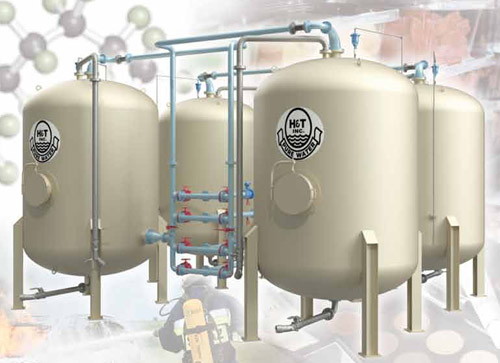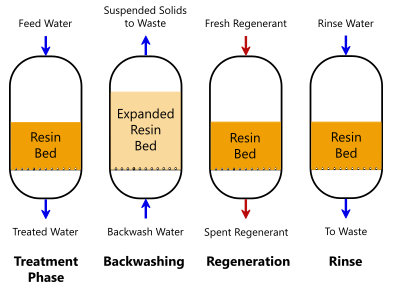Advanced Approaches for Reliable PFAS Contamination Elimination
The consistent difficulty of PFAS contamination demands the exploration of sophisticated elimination methods that can efficiently resolve these dangerous compounds. Innovative innovations, such as sophisticated oxidation procedures and various adsorption techniques, have actually emerged as appealing services in mitigating PFAS from influenced settings.
Understanding PFAS Qualities
Although per- and polyfluoroalkyl substances (PFAS) have actually been widely utilized in various industrial and customer items due to their unique residential or commercial properties, their determination in the environment presents significant difficulties to public health and safety. PFAS are a group of synthetic chemicals identified by a carbon-fluorine bond, one of the greatest chemical bonds known, which adds to their remarkable stability and resistance to deterioration. This security enables PFAS to collect in the atmosphere and living organisms, causing possible unfavorable wellness effects.
These very same properties add to their environmental persistence, as PFAS do not quickly damage down via natural procedures. Comprehending the chemical residential or commercial properties of PFAS is necessary for creating reliable methods to manage and minimize their environmental influence.
Innovative Removal Technologies
The perseverance of PFAS in the environment has actually spurred the growth of cutting-edge remediation technologies intended at successfully removing these impurities from influenced environments. Amongst the most promising methods are sophisticated oxidation procedures (AOPs), which make use of effective oxidants to break down PFAS substances right into much less damaging materials. AOPs can be tailored to target certain PFAS structures, boosting their effectiveness.
An additional emerging innovation is making use of adsorption media, such as triggered carbon and ion exchange materials, which can selectively record PFAS from infected water. These products have revealed significant removal effectiveness, although periodic substitute and regrowth are required to maintain efficiency.
Membrane filtering strategies, including reverse osmosis and nanofiltration, are also gaining grip in PFAS removal. These techniques can successfully separate PFAS from water, providing a feasible solution for dealing with polluted sources. In addition, thermal treatment techniques, such as incineration, can disintegrate PFAS into non-toxic results, though they require cautious administration to control emissions.
Collectively, these cutting-edge remediation modern technologies represent substantial developments in the recurring fight versus PFAS contamination, using different approaches to restore afflicted environments and protect public health and wellness.

Bioremediation Techniques
Bioremediation strategies offer an encouraging technique to dealing with PFAS contamination by utilizing the natural capabilities of microorganisms to weaken these relentless compounds (m270 waste management). This method entails the usage of bacteria, fungis, and other microbes that can metabolize or transform PFAS substances into much less damaging byproducts
Current advancements in molecular biology and ecological microbiology have actually boosted our understanding of microbial communities and their possible duties in PFAS deterioration. Researchers are proactively exploring particular stress of germs, such as Pseudomonas and Bacillus, which have actually demonstrated the capability to damage down certain PFAS substances.
In situ bioremediation strategies, where bacteria are stimulated straight in contaminated environments, can be specifically effective. This approach commonly involves the application of nutrients or electron benefactors to advertise microbial development and activity. Additionally, ex lover situ methods, such as bioreactors, enable regulated problems that can optimize deterioration rates.
Regardless of the promise of bioremediation, difficulties stay, including the complex nature of PFAS compounds and the need for extensive area screening - m270 waste management. Proceeded r & d will be essential to improve these techniques and assess their efficiency in diverse environmental contexts
Adsorption and Filtration Methods
Attending to PFAS contamination usually entails utilizing adsorption and filtration techniques, which are created to remove these relentless chemicals from water and dirt. Amongst the numerous techniques, triggered carbon adsorption is extensively used as a result of its high area and porosity, making it possible for reliable trapping of PFAS molecules. Granular triggered carbon (GAC) systems are particularly favored for treating large volumes of contaminated water, while powdered triggered carbon (POLITICAL ACTION COMMITTEE) can be made use of for smaller-scale applications.
Ion exchange resins likewise show pledge in PFAS elimination, working by trading PFAS ions with less dangerous Click This Link ions in the water. This method has shown performance in concentrating PFAS substances, promoting their succeeding elimination. Additionally, membrane layer filtration techniques, such as reverse osmosis and nanofiltration, run by utilizing semi-permeable membranes to different PFAS from water, properly decreasing their concentrations.
While these techniques work, they must be very carefully selected based on the particular PFAS compounds existing and the ecological context. Continual improvements in materials scientific research and design are resulting in the development of unique adsorbents and filtration systems that improve elimination effectiveness and decrease functional expenses, consequently boosting general removal initiatives.
Regulatory and Plan Factors To Consider
Just how can effective regulative frameworks boost the monitoring of PFAS contamination? Comprehensive plans are important to make certain a worked with and robust action to the challenges presented by per- and polyfluoroalkyl substances (PFAS) Rules can develop clear standards for surveillance, reporting, and remediating PFAS-contaminated sites, promoting responsibility among sectors and public entities. (m270 waste management)

On top of that, monetary rewards and grants can be incorporated into plans to motivate the fostering of advanced removal modern technologies. Policymakers should additionally focus on study and growth, making sure that emerging techniques for PFAS removal are validated and applied properly.
Moreover, public awareness and interaction are important elements of any type of regulatory approach, encouraging communities to promote for their health and wellness. Ultimately, a well-structured governing environment Learn More will not just enhance the administration of PFAS contamination however likewise advertise sustainable practices that safeguard future generations.
Verdict
In recap, the complexity of PFAS contamination requires the fostering of sophisticated remediation methods. Ingenious innovations such as advanced oxidation processes, adsorption techniques, and membrane layer filtration have demonstrated significant efficiency in removing these relentless compounds from contaminated water resources. Furthermore, regulatory structures should advance to sustain the application of these innovations, ensuring secure and efficient monitoring of PFAS toxins. Continued r & d in this field remain vital to addressing the click here for more info difficulties presented by PFAS contamination.